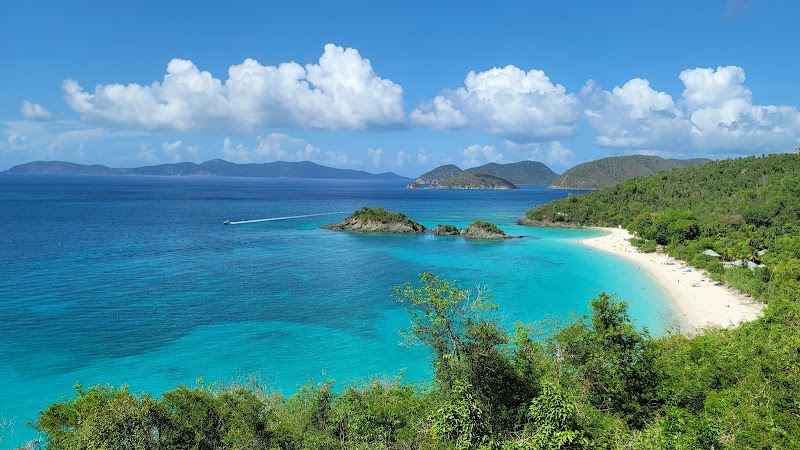Best Hiking Trails on St. John: Explore Forest Paths and Scenic Ridges Away from the Coast
Explore St. John’s interior beyond the coastlines with hiking trails that wind through lush forests and rise along scenic ridges. These paths offer a practical challenge paired with rewarding views and a chance to experience the island’s wild heart firsthand.
Start Early to Beat the Heat
Temperatures rise quickly and trails can become slippery or tiring by midday; an early start ensures cooler temps and better light for photography.
Hydrate Generously
Carry at least two liters of water per person—interior trails are shaded but still draining, and no fresh water sources are available on most routes.
Wear Supportive Footwear
Trails feature rocky, uneven terrain requiring shoes with good grip and ankle support to prevent injury and ensure stability.
Carry a Map or GPS Device
Cell service may be unreliable in these forested, mountainous areas; having offline navigation tools keeps you on track and safe.
Best Hiking Trails on St. John: Explore Forest Paths and Scenic Ridges Away from the Coast
St. John’s rugged interior offers a different pulse from the island’s famous shoreline. Away from the coastal breeze and sunlit coves, the hiking trails wind through thick forests and along ridges that challenge and reward with quiet, sweeping views. These paths demand respect as they push you through sharp rises and shaded valleys where nature is fiercely itself.
One of the top interior routes is the Ram Head Ridge Trail. At 2.7 miles round trip with around 600 feet of elevation gain, this trail breaks from the common coastal loops, diving into forest shades where the air feels cooler, and giant gumbo limbo and mahoe trees lean in as if to dare you forward. The ridge reveals grand views of the island’s wild heart and the distant Caribbean horizon. Terrain varies: expect rocky phases and loose soil, so sturdy footwear is non-negotiable.
For a quieter trek with steady climbs, the Bordeaux Mountain Trail covers 3.5 miles round trip with a 1,200-foot ascent to St. John’s highest point. It’s a demanding incline that tests perseverance, but the ridge-top panorama holds unparalleled reward. The forest canopy opens over rocky summits where trade winds push lightly, clearing heat and dust. Keep an eye out for the sharp sounds of native birds that thread the canopy—they are companions to this fiercely alive island interior.
The Johnny Horn Trail, shorter at 1.5 miles one-way with moderate hills, offers a mix of ridge and forest path. This trail carries you past deep, green valleys and provides access to lesser-known viewpoints with less foot traffic. It demands attention: roots and boulders challenge footing, while small streams offer spots to pause and listen to water daring its way downhill.
Practical considerations are crucial here. Start early to avoid midday heat, bring at least two liters of water, and pack layers—shade and ready breezes can quickly shift. A hat and insect repellent are worth their weight in comfort. Cell reception is patchy; map or GPS is necessary.
These trails strike a balance between adventure and approachability. They don’t offer the popular coastal postcard but demand more focus and engagement. Nature shows itself in a raw form—quiet but assertive, inviting yet uncompromising. Hiking here isn’t about conquering but about interacting, pacing yourself to the rhythms of St. John’s forest and ridge lines.
Nearby Trips
All Adventures
Boat Charters
Water Activities
Adventures near Cruz Bay
Discover the unique and memorable adventures that make Cruz Bay special.
Frequently Asked Questions
Are permits required to hike these trails?
No permits are required to access the designated hiking trails in St. John’s National Park, but some parking areas or visitor centers may charge nominal entrance fees.
What wildlife might I encounter on these interior trails?
Hikers can spot the endemic St. John’s iguana, various bird species like the bananaquit and black-whiskered vireo, and occasionally the shy mongoose. Keep a respectful distance as these animals are rarely aggressive but sensitive to disturbance.
Is trail signage clear for the less experienced hiker?
Main trails are generally marked, but some side paths and junctions have minimal signage. Bringing a physical trail map or GPS app with offline capabilities is strongly recommended.
What time of day offers the best conditions for hiking these trails?
Early mornings before 9 AM are ideal to avoid heat and crowds while catching soft, diffused light for both comfort and photography.
Are there any restrictions on dogs or pets on these trails?
Pets are discouraged in Virgin Islands National Park to protect sensitive wildlife habitats, and leash laws strictly apply when pets are allowed.
Can I combine hikes to cover multiple ridges in one trip?
With good planning and adequate fitness, hikers can link trails like Johnny Horn and Ram Head Ridgeline for longer excursions, but awareness of daylight and trail difficulty is crucial.
Recommended Gear
Sturdy Hiking Shoes
Essential for protection and grip on uneven, rocky, and sometimes slippery trail surfaces.
Water Bottle or Hydration Pack
Hydration is critical; carry enough water to stay refreshed through the hike.
Hat and Sunscreen
Protect yourself from sun exposure even on shaded trails, particularly in hotter months.
Insect Repellent
Forest interiors can harbor mosquitoes and other biting insects, especially during humid periods.
Local Insights
Hidden Gems
- "The rarely visited Lameshur Bay Ridge viewpoint offers isolated panoramas without the bustle of popular spots."
- "Small freshwater seeps along the Johnny Horn trail provide natural cooling breaks rarely known to tourists."
Wildlife
- "St. John’s unique iguanas track across trails in the early morning; pause to observe their deliberate moves."
- "Listen for the haunting song of the Puerto Rican Lizard Cuckoo that weaves through forest layers."
History
"Many trail corridors follow paths once used by indigenous Taino people and small sugar plantation routes, blending cultural layers into the landscape."

